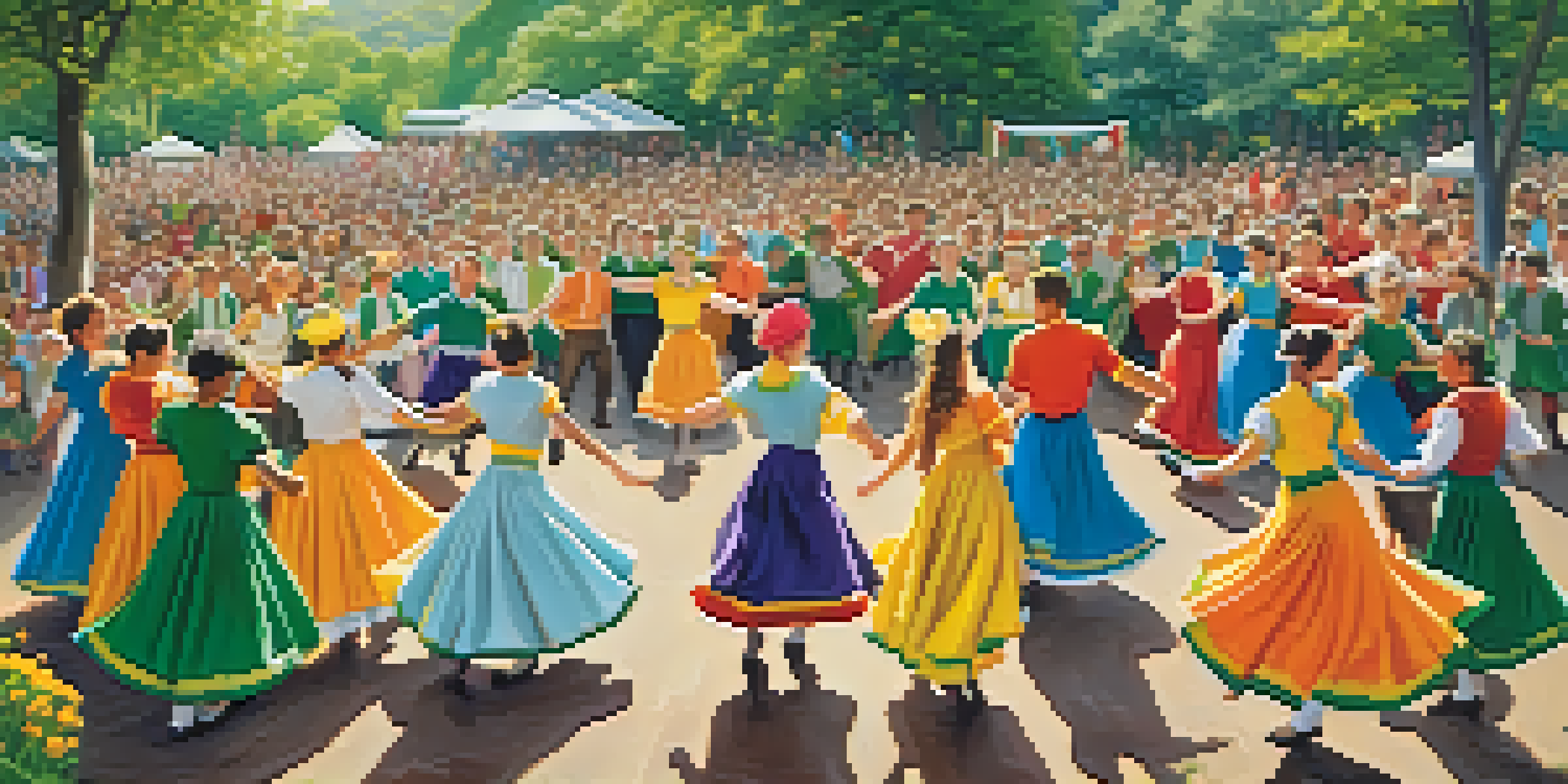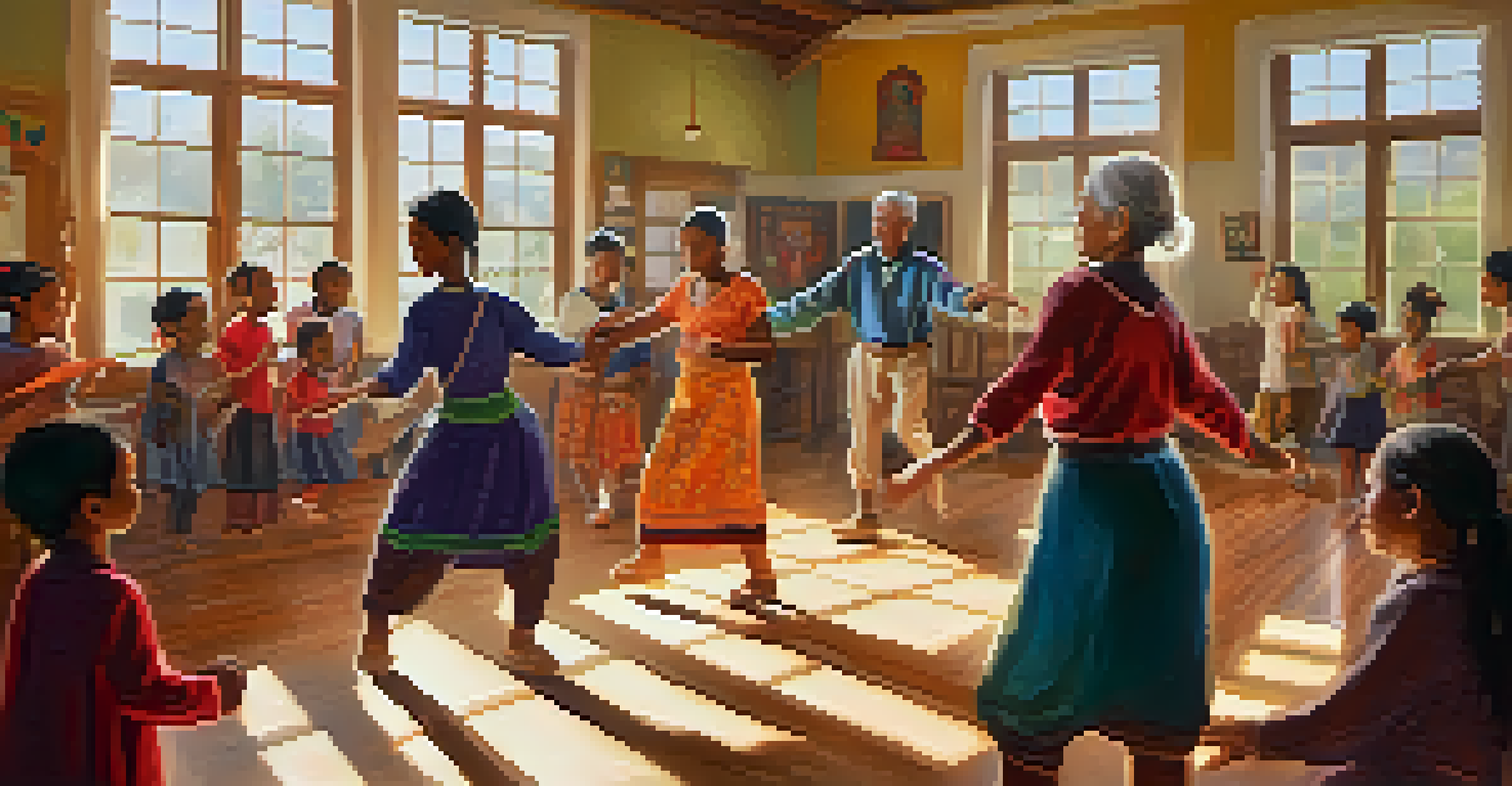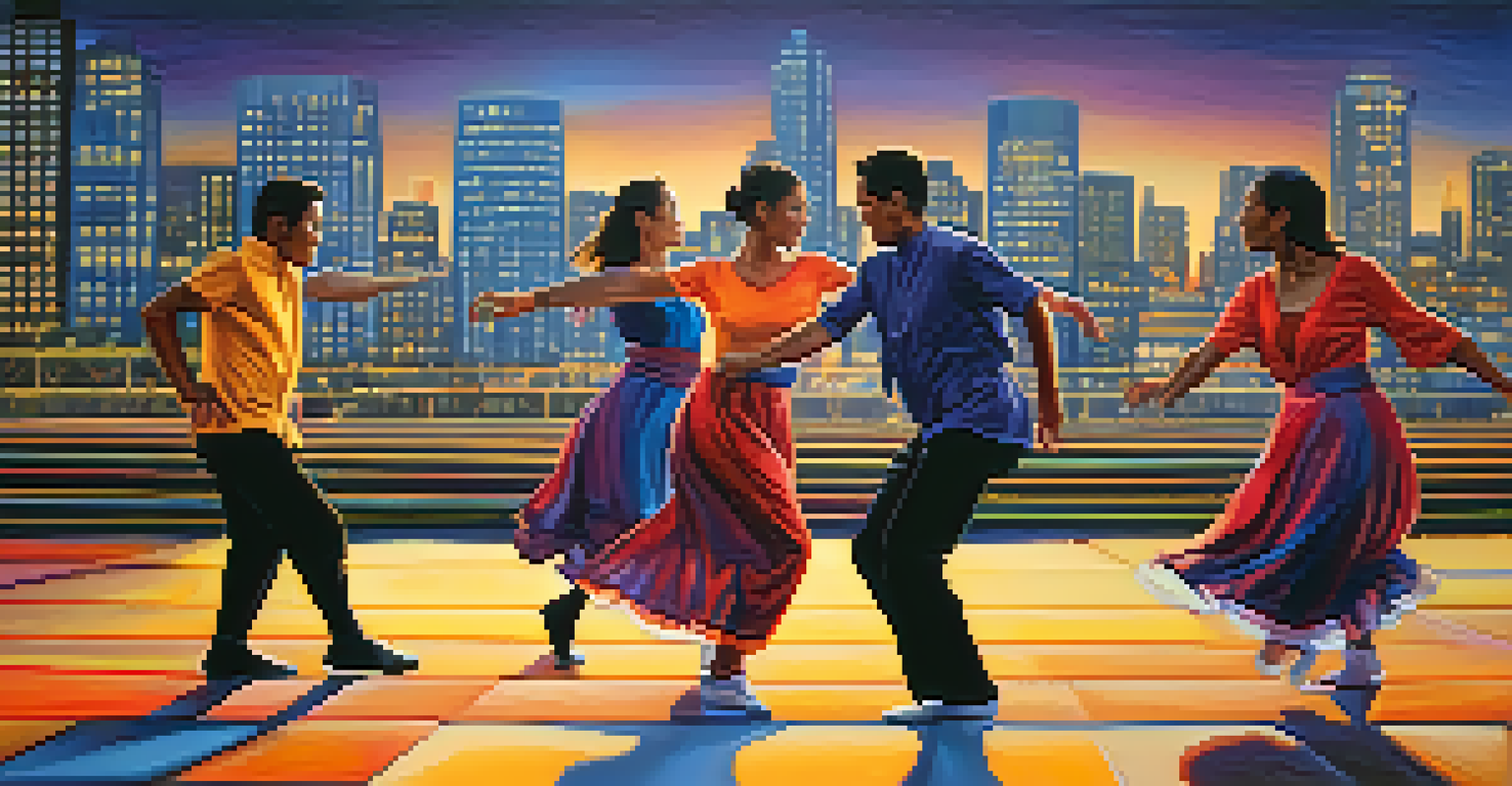The Significance of Traditional Folk Dances in Modern Culture

Understanding Folk Dances: A Cultural Treasure
Traditional folk dances are more than just rhythmic movements; they are a vibrant expression of a community's heritage. These dances often tell stories, celebrate historical events, or mark seasonal changes, weaving the fabric of cultural identity. For many, participating in these dances provides a sense of belonging and connection to their roots.
Dance is the hidden language of the soul.
Take, for example, the lively Irish jig, which not only entertains but also conveys the spirit and struggles of the Irish people. Similarly, Native American powwow dances serve as a platform for storytelling and cultural preservation. This rich tapestry of movements and music stands as a testament to the resilience and creativity of diverse communities.
In a rapidly changing world, understanding the significance of folk dances helps us appreciate the depth of cultural narratives. These dances remind us of our past while inviting us to engage with traditions that might otherwise fade away.
Folk Dances as a Bridge Across Generations
One of the most beautiful aspects of traditional folk dances is their ability to connect generations. Grandparents can share stories of their youth while teaching their grandchildren the steps of the dances they grew up with. This intergenerational exchange fosters a sense of continuity, allowing younger people to appreciate their heritage.

For instance, in many cultures, community festivals feature folk dance workshops where families can learn together. Such experiences not only strengthen family bonds but also create a shared sense of pride in cultural history. Watching a child grasp the rhythm of a traditional dance can evoke a sense of nostalgia and joy among older generations.
Folk Dances Connect Generations
Traditional folk dances foster intergenerational bonds, allowing older and younger family members to share cultural heritage through movement.
By keeping these traditions alive, communities build a bridge that spans time, ensuring that the wisdom and creativity of the past influence the present. This connection nurtures an understanding of one's identity and place within the world.
Folk Dances in Contemporary Cultural Expressions
In today's world, traditional folk dances are often infused with modern elements, creating unique cultural expressions. Many contemporary artists blend traditional steps with hip-hop or contemporary dance, making these age-old practices relevant to younger audiences. This fusion not only revitalizes folk dances but also showcases their adaptability.
Tradition is not the worship of ashes, but the preservation of fire.
A great example is the rise of folk dance troupes that perform in urban settings, using social media to reach wider audiences. These performances often draw crowds who might never have encountered such dances otherwise. By embracing modern platforms, traditional folk dances find new life and recognition.
This evolution highlights the dynamic nature of culture; it's not stagnant but rather a living entity that grows and transforms. As folk dances adapt, they invite new generations to engage with their heritage in innovative ways.
The Role of Folk Dances in Community Building
Folk dances play a crucial role in fostering community spirit and togetherness. Community events centered around dance allow people to gather, celebrate, and share their cultural pride. These shared experiences create bonds among participants, making them feel part of something larger than themselves.
For example, local festivals often feature folk dance competitions where groups from various backgrounds showcase their skills. Such events encourage collaboration and understanding among different cultures, promoting inclusivity. When people come together to celebrate their diverse heritages, they build mutual respect and appreciation.
Folk Dances Adapt to Modern Times
Contemporary artists are infusing traditional folk dances with modern elements, ensuring their relevance and appeal to younger audiences.
In this way, folk dances become a powerful tool for social cohesion. They remind us that despite our differences, we can unite in celebration and joy, reinforcing our shared humanity.
Folk Dances as a Form of Political Expression
Throughout history, traditional folk dances have also served as a form of political expression. In times of oppression or conflict, these dances can become a means of resistance, conveying messages of hope and resilience. They often reflect the struggles and aspirations of a community, allowing them to express their identity even under challenging circumstances.
For instance, during the civil rights movement in the United States, folk music and dance became powerful tools for activism. Songs and dances that celebrated African American culture helped unite people in their fight for equality. This blend of art and activism illustrates how folk dances can transcend mere entertainment, carrying significant cultural weight.
By embracing folk dances as political expressions, communities can assert their identities and advocate for change. This capacity for dance to convey powerful messages adds another layer to its significance in modern culture.
Educational Value of Traditional Folk Dances
Incorporating folk dances into educational settings offers students a unique opportunity to learn about culture through movement. Schools and community programs increasingly recognize the importance of teaching traditional dances as part of their curricula. This approach not only promotes cultural awareness but also enhances physical education through a fun and engaging medium.
For example, students learning about a specific culture can participate in its traditional dances, gaining insights into its history and values. Such experiences make learning more interactive and memorable, fostering a deeper understanding of cultural diversity. They also encourage teamwork and collaboration among students.
Folk Dances Promote Community Spirit
Community events centered around folk dances create a sense of belonging and inclusivity, uniting people from diverse backgrounds.
By integrating folk dances into education, we nurture a generation that appreciates and respects cultural differences. This can lead to more inclusive societies, where understanding and empathy flourish.
The Future of Folk Dances in a Globalized World
As our world becomes increasingly interconnected, the future of traditional folk dances hangs in a delicate balance. While globalization can lead to the dilution of cultural practices, it also offers opportunities for folk dances to reach global audiences. The challenge lies in preserving authenticity while adapting to new contexts.
Many communities are proactively documenting their folk dances through festivals, workshops, and digital platforms. By sharing their traditions online, they can inspire a global appreciation for their unique cultural expressions. This not only helps preserve these dances but also invites dialogue and exchange across cultures.

Ultimately, the future of folk dances will depend on our commitment to celebrating diversity and fostering cultural exchange. As we embrace our shared humanity, traditional folk dances can continue to thrive, enriching our lives in profound ways.